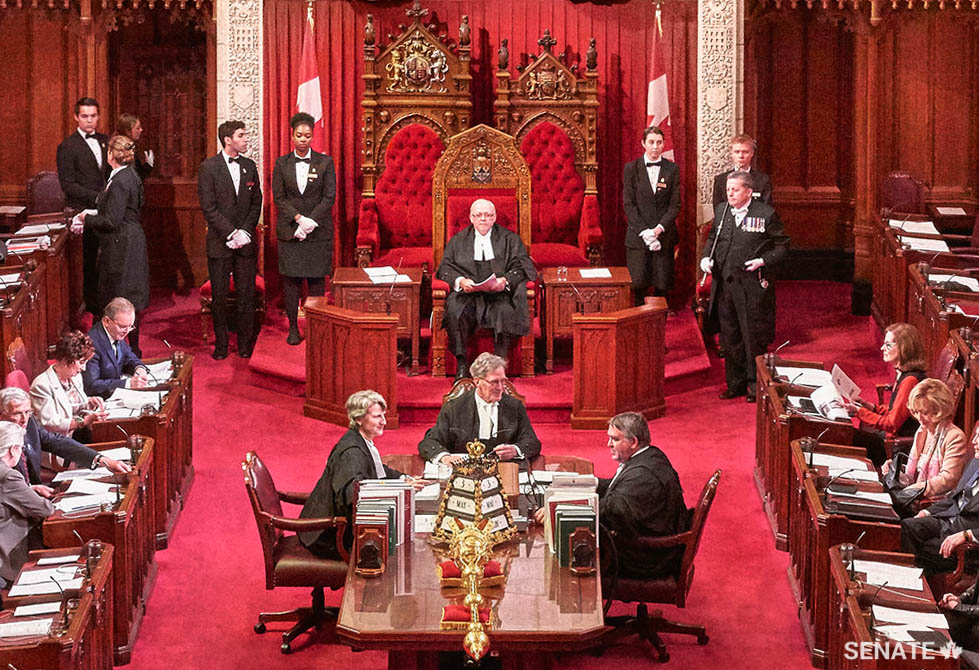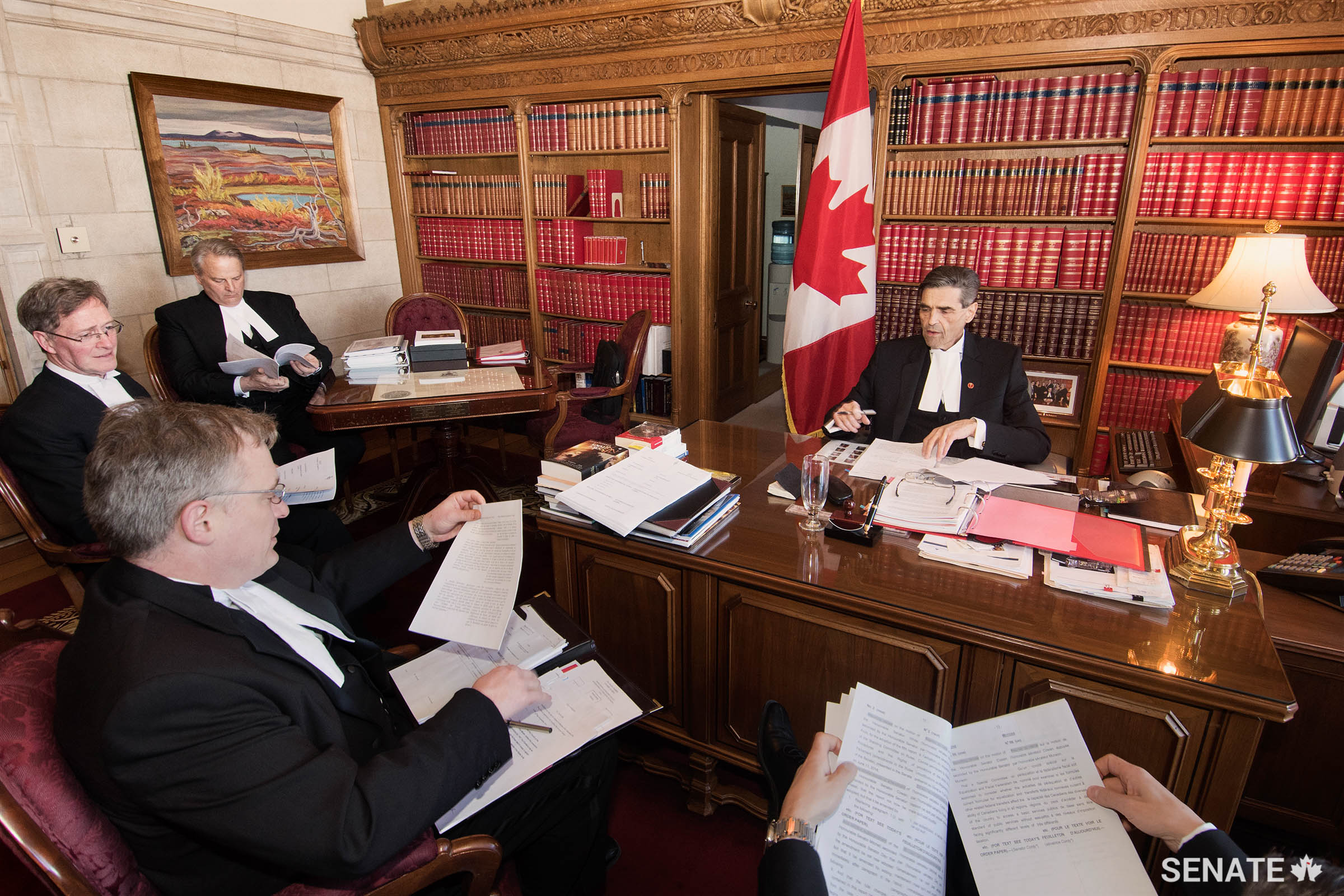Senate Speaker: keeping Chamber debate constructive and orderly



Every debate needs a moderator and Canada’s Senate is no exception.
The Speaker of the Senate is the chairperson of the Red Chamber, presiding over debates and votes, ruling on points of order and questions of privilege and helping Senate business remain constructive and orderly.
As the Senate’s chairperson, the Speaker has three key responsibilities:
- Presiding over debate
- Ruling on questions or issues raised by senators
- Maintaining order and decorum
The Speaker opens and closes each sitting and calls certain headings on the Senate’s agenda.
To keep debate running smoothly, the Speaker recognizes senators who wish to speak and informs them when their time has expired. When debate draws to a close, the Speaker puts questions to a vote.
The Speaker helps the Senate maintain order, making rulings to address senators’ concerns that parliamentary procedure or decorum may have been breached. If proceedings became unruly, the Speaker can have the public galleries cleared or suspend the sitting until order is restored.
The role of presiding officer is non-partisan; however, the Speaker can vote on motions from the chair. The Speaker can also participate in debates, provided these interventions are made from the floor.
The Speaker has dozens of counterparts around the globe. Eighty-two countries, including 22 Commonwealth nations, have bicameral legislatures where an officer, who goes by the title Speaker, President or Chairperson, presides over the upper house.
The origins of this role go back a millennium to when English kings periodically summoned a great council of church leaders and barons to advise them on important matters of state. The chief official at this council was the Lord Chancellor, the king’s foremost advisor and keeper of the royal seal.
This council evolved during the 1200s from an advisory body into a representative assembly that often challenged royal authority. By the late 1600s, England was a constitutional monarchy, meaning the power to legislate lay with Parliament, not the monarch.
During this evolution, the Lord Chancellor remained the presiding officer of its upper chamber, the House of Lords. As the role of the elected House of Commons expanded, the House of Lords and the Lord Chancellor remained central to British political life.
The British brought these institutions to North America in the late 1700s, as they established colonies in what would become the four provinces of Confederation: Nova Scotia, New Brunswick and Upper and Lower Canada, today’s Ontario and Quebec.
Each legislature modelled its upper chamber, the Legislative Council, on Britain’s House of Lords and its presiding officer, the Speaker, on the Lord Chancellor.
Through the tumultuous 1830s and 40s — years of rebellion and reform — Canadian parliamentary institutions evolved, establishing their own precedents and procedures, guided by British traditions.
When Confederation made Canada a self-governing dominion in 1867, a key provision was the creation of the Senate as an upper chamber based on region, with the Speaker as its presiding officer.
In addition to fulfilling procedural responsibilities in the Chamber, the Speaker performs a number of ceremonial and diplomatic duties, including receiving foreign dignitaries and representing Canada’s Senate on official visits abroad.
To learn more about the Speaker of the Senate, click here.


